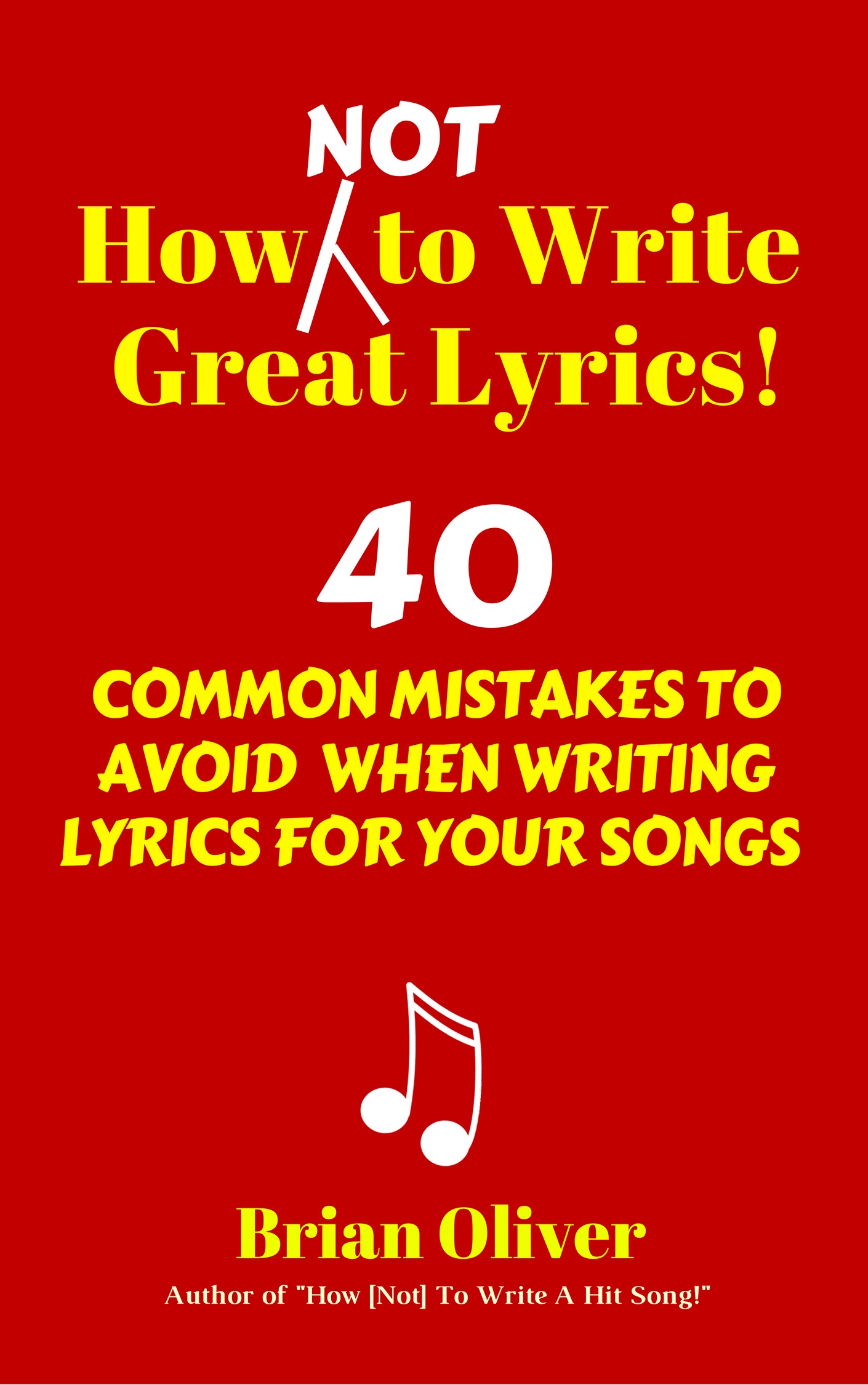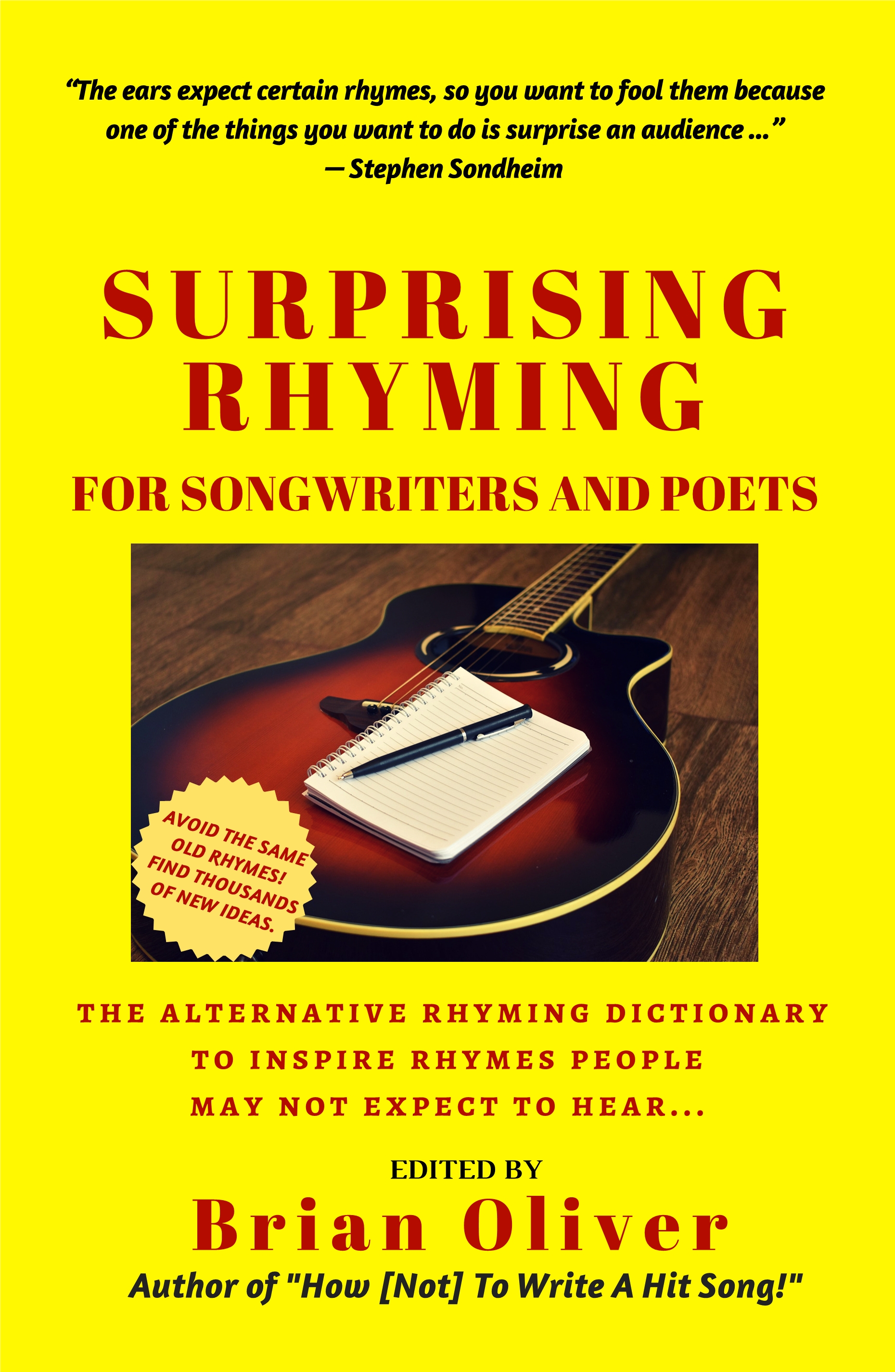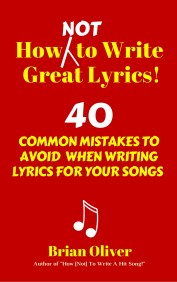
“So many songs are now written by committee … Bruno Mars’ “That’s What I Like”, which won Song of the Year at this year’s Grammys, was credited to eight writers.
“I don’t understand how that works because, for me, a song starts with a melody combined with chords. I arrange the song with bass and drums after the song is finished, not the other way around.
“If I start with the drums and the bass and then add some chords, randomly, and then try to write a melody … I don’t know how that works. I don’t get it.
“What that lacks, I think, is a ‘sender’. If someone likes my music, that’s me; it’s me sending it to you. If there are seven or eight people behind it, are they all honest? Do they all mean it?”
— ABBA’s Benny Andersson (in an interview with Music Business Worldwide magazine)
Photo by Nicho Södling
# # # #
 “SURPRISING RHYMING” – The Alternative Rhyming Dictionary for Songwriters and Poets – is available from Amazon as a US paperback, a UK paperback, and across Europe. It is also available as an eBook from Amazon’s Kindle store in the United States, the UK and Europe, as well as Apple’s iTunes Book Store, Barnes & Noble’s Nook Store and Rakuten’s KoboBooks.
“SURPRISING RHYMING” – The Alternative Rhyming Dictionary for Songwriters and Poets – is available from Amazon as a US paperback, a UK paperback, and across Europe. It is also available as an eBook from Amazon’s Kindle store in the United States, the UK and Europe, as well as Apple’s iTunes Book Store, Barnes & Noble’s Nook Store and Rakuten’s KoboBooks.
Read a FREE sample of the book HERE (USA) … HERE (UK) … HERE (CANADA).
![“HOW [NOT] TO WRITE A HIT SONG! - 101 COMMON MISTAKES TO AVOID IF YOU WANT SONGWRITING SUCCESS” is available from Amazon as a paperback and also as an eBook from Amazon’s Kindle Store, Apple's iTunes Store, Barnes and Noble's Nook store, and from KoboBooks.com.](https://thehitformula.com/wp-content/uploads/2013/05/how-not-to-write-a-hit-song-smashwords-cover-blog-widgit-188x282.jpg?w=145&h=218) A 5-star rated book at Amazon, “How [Not] To Write A Hit Song! – 101 Common Mistakes To Avoid If You Want Songwriting Success” is available from Amazon as a US paperback, a UK paperback and as an eBook from Amazon’s Kindle Store. It is also available from Apple’s iTunes Book Store, Barnes & Noble’s Nook store, and Rakuten’s KoboBooks.
A 5-star rated book at Amazon, “How [Not] To Write A Hit Song! – 101 Common Mistakes To Avoid If You Want Songwriting Success” is available from Amazon as a US paperback, a UK paperback and as an eBook from Amazon’s Kindle Store. It is also available from Apple’s iTunes Book Store, Barnes & Noble’s Nook store, and Rakuten’s KoboBooks.
Read a FREE sample of the book HERE (USA), HERE (UK), HERE (Australia) and HERE (Canada).
 “How [Not] To Write Great Lyrics! – 40 Common Mistakes To Avoid When Writing Lyrics For Your Songs” is available from Amazon and Barnes & Noble as a US paperback, UK paperback and as an eBook from Amazon’s Kindle Store. It is also available from Apple’s iTunes Book Store, Barnes & Noble’s Nook store, and Rakuten’s KoboBooks.
“How [Not] To Write Great Lyrics! – 40 Common Mistakes To Avoid When Writing Lyrics For Your Songs” is available from Amazon and Barnes & Noble as a US paperback, UK paperback and as an eBook from Amazon’s Kindle Store. It is also available from Apple’s iTunes Book Store, Barnes & Noble’s Nook store, and Rakuten’s KoboBooks.
Read a FREE sample of the book HERE (USA), HERE (UK), HERE (Australia) and HERE (Canada).
When David Bowie released his twenty-fourth studio album, The Next Day, in 2013, a journalist asked him to explain his thinking behind the new songs, each of which featured unusual, cryptic lyrics and surreal imagery.
Bowie responded by sending the journalist a list of 42 words which supposedly provided the framework for the critically-acclaimed album. Here are those 42 words:
Effigies … Indulgences … Anarchist … Violence … Chthonicum … Intimidation … Vampyric … Pantheon … Succubus … Hostage … Transference … Identity … Mauer … Interface … Flitting … Isolation … Revenge … Osmosis … Crusade … Tyrant … Domination … Indifference … Miasma … Pressgang … Displaced … Flight … Resettlement … Funereal … Glide … Trace … Balkan … Burial … Reverse … Manipulate … Origin … Text … Traitor … Urban … Comeuppance …. Tragic … Nerve … Mystification.
Quite a confusing lyrical framework for an album that ended up including song titles such as: ‘The Stars (Are Out Tonight)’, ‘Love Is Lost’, ‘Where Are We Now?’, ‘Valentine’s Day’ and ‘The Next Day’.
Maybe the answer can be found in a 2008 interview with Bowie. In it he described how he often came up with interesting lyric lines by employing the ‘cut-up’ writing technique used by postmodernist author William S. Burroughs in his controversial novel Naked Lunch.
‘Cut-up’ is a literary technique designed to add an element of chance to the creative process. It involves taking a finished line of text and cutting it into pieces—usually with just one or two words on each piece. The resulting pieces are then rearranged to create a brand new text.
The cut-up concept can be traced back to the Dadaists of the 1920s, but it was developed further in the early 1950s by painter, writer and sound poet Brion Gysin—and then popularized in the late 1950s and early 1960s by Burroughs.
David Bowie explained: “I used it for igniting anything that may have been in my imagination … You write down a paragraph or two describing several different subjects, creating a kind of ‘story ingredients’ list, I suppose, and then cut the sentences into four or five-word sections, then mix them up and reconnect them.
“You can get some pretty interesting idea combinations,” he said. “You can use them as is or, if you have a craven need to not lose control, bounce off these ideas and write whole new sections.”
The ‘cut-up’ technique is also said to have influenced Kurt Cobain’s songwriting. And Thom Yorke applied a similar method on Radiohead’s 2000 album Kid A. Yorke reportedly wrote single lines, put them into a hat, and drew them out at random while the band rehearsed the songs.
Here’s Bowie explaining his cut-up technique in the 1975 BBC TV documentary Cracked Actor …
In the early 1990s, Bowie developed a more advanced version of his ‘cut-up’ technique when he teamed up with Gracenote co-founder Ty Roberts to create the Verbasizer—a custom program for Apple’s Mac which is now regarded as an early form of AI-based songwriting.
The Verbasizer randomized portions of Bowie’s inputted text sentences to create new ones with new meanings and moods. It would cut up and reassemble Bowie’s words electronically, much like he had done with paper, scissors and glue back in the 1970s. Bowie made use of the Verbasizer to create the lyrics and liner notes for his 1995 album Outside.
“What you end up with is a real kaleidoscope of meanings and topic and nouns and verbs all sort of slamming into each other,” Bowie explained in this 1997 documentary about the Verbasizer …
# # # #
“How [Not] to Write Songs in the Streaming Age – 40 Mistakes to Avoid If You Want to Get More Streams” is available from Amazon as a US paperback, a UK paperback, a Canada paperback, an Australia paperback, and across Europe.
It is also available as an eBook from Amazon’s Kindle store in the United States, the UK, Canada, Australia, and across Europe—as well as Apple Books, Barnes & Noble and Rakuten’s KoboBooks.
Read a FREE SAMPLE of the book HERE (USA)…HERE (UK)… HERE (CANADA)… and HERE (AUSTRALIA).
![“HOW [NOT] TO WRITE A HIT SONG! - 101 COMMON MISTAKES TO AVOID IF YOU WANT SONGWRITING SUCCESS” is available from Amazon as a paperback and also as an eBook from Amazon’s Kindle Store, Apple's iTunes Store, Barnes and Noble's Nook store, and from KoboBooks.com.](https://thehitformula.com/wp-content/uploads/2013/05/how-not-to-write-a-hit-song-smashwords-cover-blog-widgit-188x282.jpg?w=100) A 5-star rated book at Amazon, “How [Not] To Write A Hit Song! – 101 Common Mistakes To Avoid If You Want Songwriting Success” is available from Amazon as a US paperback, UK paperback and as an eBook from Amazon’s Kindle Store. It is also available from Apple’s iTunes Store (Books/Arts & Entertainment/Music), Barnes & Noble’s Nook store, and Rakuten’s KoboBooks.
A 5-star rated book at Amazon, “How [Not] To Write A Hit Song! – 101 Common Mistakes To Avoid If You Want Songwriting Success” is available from Amazon as a US paperback, UK paperback and as an eBook from Amazon’s Kindle Store. It is also available from Apple’s iTunes Store (Books/Arts & Entertainment/Music), Barnes & Noble’s Nook store, and Rakuten’s KoboBooks.
Read a FREE sample of the book HERE (USA) and HERE (UK), HERE (Australia) and HERE (Canada).
“How [Not] To Write Great Lyrics! – 40 Common Mistakes To Avoid When Writing Lyrics For Your Songs” is available from Amazon as a US paperback, UK paperback and as an eBook from Amazon’s Kindle Store. It is also available from Apple’s iTunes Store (Books/Arts & Entertainment/Music), Barnes & Noble’s Nook store, and Rakuten’s KoboBooks.
Read a FREE sample of the book HERE (USA) and HERE (UK), HERE (Australia) and HERE (Canada).
“SURPRISING RHYMING” – The Alternative Rhyming Dictionary for Songwriters and Poets – is available from Amazon as a US paperback, a UK paperback, and across Europe. It is also available as an eBook from Amazon’s Kindle store in the United States, the UK and Europe, as well as Apple’s iTunes Store, Barnes & Noble’s Nook Store and Rakuten’s KoboBooks.
Read a FREE sample of the book HERE (USA) … HERE (UK) … HERE (CANADA).

Photo: Andreas Lawen, Fotandi
As experienced songwriters know, you only have a limited amount of time in which to grab a listener’s attention and create a lasting impression on them. If your song structure and lyrics are too complicated and difficult to understand, listeners may find it hard to grasp what you’re trying to communicate to them … and they could soon lose interest in the song.
The Foo Fighters’ frontman Dave Grohl compares this challenge to trying to solve a Rubik’s Cube. “You have to try to find a melody and lyric that will braid together and create four minutes of memory that you’ll have for the rest of your life,” he explained in a recent Billboard Chart Beat podcast.
“To me, the challenge is always trying to craft a song that is simple in a way that people will connect to it emotionally,” he said. “Even just a melody … that’s a funny thing. A lyric is one thing, but there’s something that a melody can do … just the sound of a minor scale, or a major scale rising in a chorus. The notes will twist your heart.”
As Dave Grohl acknowledges, for a song to become a great song it must be able to reach out and touch listeners and stimulate an emotional response within them. It should make them feel something and take them on an emotional journey.
The great George Gershwin once described songwriting as “an emotional science”, and scientific studies have shown that a wide range of notes can imply joy or uneasiness, while a narrower range of notes can suggest tranquillity, sadness or triumph.
Major chords often convey happiness or joy, while minor chords are associated with sadness. Using a mix of minor chords and major chords can add extra depth and colour to a song. But chord progressions should not be so complicated that they don’t flow properly and end up wandering aimlessly.
And remember, a song should contain only one story, or one message, told from a single point of view. Lyrically, you can avoid confusing the listener by using the viewpoint character’s thoughts and perceptions to drive the song.
New songwriters, who are still developing their craft, often fall into the trap of believing that every line of their song has to be clever or tricky in order to make an impression on the listener. What they should really be focusing on is making sure that the structure of their song is clear, simple and easy to follow. This will make it easier for people to feel an emotional connection with the song.
As Dave Grohl suggests, even within a simple song form the use of certain chord progressions and recurring sequences of notes can have an emotional effect on the listener. The Foo Fighters’ classic song “Times Like These” is a great example of this …




![“HOW [NOT] TO WRITE A HIT SONG! - 101 COMMON MISTAKES TO AVOID IF YOU WANT SONGWRITING SUCCESS” is available from Amazon as a paperback and also as an eBook from Amazon’s Kindle Store, Apple's iTunes Store, Barnes and Noble's Nook store, and from KoboBooks.com.](https://thehitformula.com/wp-content/uploads/2013/05/how-not-to-write-a-hit-song-smashwords-cover-blog-widgit-188x282.jpg)
 by Brian Oliver
by Brian Oliver “Rhyming doesn’t have to be exact anymore,” Bob Dylan told Paul Zollo of American Songwriter magazine in a 2012 interview. “It gives you a thrill to rhyme something and you think, ‘Well, that’s never been rhymed before’. Nobody’s going to care if you rhyme ‘represent’ with ‘ferment’, you know. Nobody’s gonna care.”
“Rhyming doesn’t have to be exact anymore,” Bob Dylan told Paul Zollo of American Songwriter magazine in a 2012 interview. “It gives you a thrill to rhyme something and you think, ‘Well, that’s never been rhymed before’. Nobody’s going to care if you rhyme ‘represent’ with ‘ferment’, you know. Nobody’s gonna care.” Many experienced writers feel that using imperfect rhymes gives them greater freedom and flexibility to create word pictures. It also provides an ingenious way to avoid employing rhyming clichés or rhymes that are too obvious. For example, in her award-winning 2013 song ‘Brave’ (co-written with Jack Antonoff), Sara Bareilles (left) rhymes ‘outcast’ with ‘backlash’, ‘inside’ with ‘sunlight’, ‘there’ with ‘stared’, and ‘run’ with ‘tongue’.
Many experienced writers feel that using imperfect rhymes gives them greater freedom and flexibility to create word pictures. It also provides an ingenious way to avoid employing rhyming clichés or rhymes that are too obvious. For example, in her award-winning 2013 song ‘Brave’ (co-written with Jack Antonoff), Sara Bareilles (left) rhymes ‘outcast’ with ‘backlash’, ‘inside’ with ‘sunlight’, ‘there’ with ‘stared’, and ‘run’ with ‘tongue’. In 1987, acclaimed hip-hop lyricist Rakim (right) pioneered the multi-syllabic approach to rhyming with compound rhymes that paired one word with two words, such as ‘righteous’ and ‘might just’. It was a style (since adopted by other rappers) that introduced a rapid, continuous, rhythmic flow, based on deeply-woven rhyme structures that incorporated internal rhymes.
In 1987, acclaimed hip-hop lyricist Rakim (right) pioneered the multi-syllabic approach to rhyming with compound rhymes that paired one word with two words, such as ‘righteous’ and ‘might just’. It was a style (since adopted by other rappers) that introduced a rapid, continuous, rhythmic flow, based on deeply-woven rhyme structures that incorporated internal rhymes.


